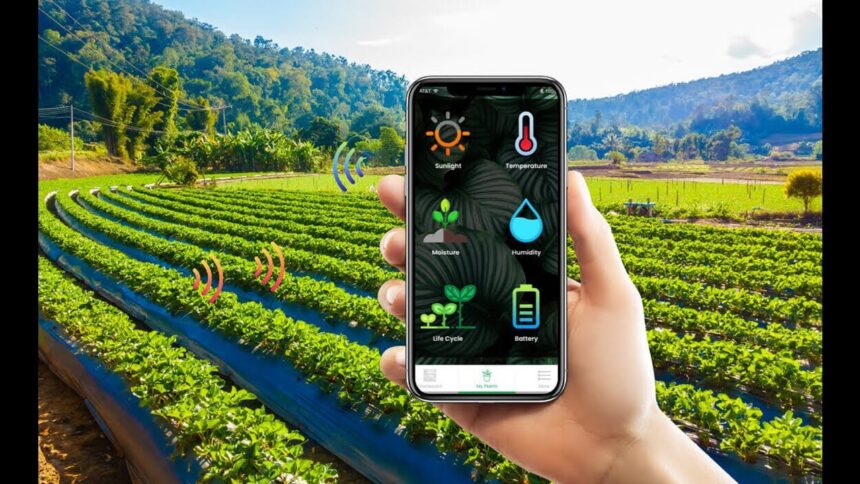Farm data management can revolutionise the productivity of any agricultural operation, large or small. A farm record keeping application offers a one-stop shop to keep records of daily operations, resources, and real-time performance analysis. Integrating manual logs into a seamless digital record enables farmers to minimise errors, optimise decision making, and offer detailed traceability as well as facilitate more efficient and informed overall management.
- Improved data organization
The main advantage of a farm record keeping app is that it helps to structure data. Rather than using scattered notebooks, spreadsheets or memory, this digital solution organizes data on crop cycles, livestock health, equipment maintenance, and input usage into a logical framework. Entries can be sorted according to date, field, or type of activity and retrieved quickly and easily by farmers. Structured data facilitates the identification of patterns throughout the seasons, which helps to evaluate changes in yields or pest outbreaks. Audits and inspections are less stressful when records are correctly labelled, and documentation is compliant with ease.
Keeping data effectively organized also avoids redundancy, avoiding listing the same data more than once, wasting time and creating inconsistencies. Further, automated backups prevent loss in case of hardware failure or accidentally deleting them. This degree of organized administration enables farmers to concentrate on strategic choices as opposed to administrative duties. In the end, the clarity of the disciplined record organization promotes proactive farming and ensures continuous resilience in operation against unpredictable threats.
- Enhanced financial tracking
Maintaining proper financial records is fundamental to the long-term viability of a farm, and a farm record keeping app makes this easier. Farmers can easily see the cash inflows and outflows by entering their expenses like seed costs, fertilizer, labour wages, and equipment service directly into the system. Reports and visual summaries allow budget analysis and cost control by breaking down costs according to category or production cycle. This accuracy helps in determining where costs can be cut without affecting the productivity.
Also, invoices and payment reminders are integrated, ensuring that the supplier and buyers are invoiced and paid on time to avoid late charges or opportunities. When all financial information is in digital storage, tax preparation is more streamlined due to the ability to export related data in an instant to verify it. Getting rid of manual bookkeeping minimizes the possibility of calculation mistakes and lost receipts. In conclusion, the use of a digital tracking tool in finance increases profitability and helps in long-term fiscal planning in an agricultural business.
- Better resource management
A proper resource management can significantly decrease the number of waste and digital record keeping is invaluable in this matter. Farm record keeping app allows farmers to track their inputs i.e. water consumption, fertilizer application, and fuel consumption in real-time. Through monitoring of the patterns, managers have the opportunity to adjust irrigation programs based on crop needs and soil conditions, and still save water without compromising yields. Likewise, the application of fertilizer can be tailored with respect to soil tests and growth phases, reducing runoff and cost of inputs.
Monitoring fuel and maintenance records will help the machinery run efficiently and unexpected breakdowns can be foreseen. The precision of resources allocation also adds up to the environmental stewardship, as it prevents any overuse of chemicals or unreasonable use of water. Moreover, electronic reminders of equipment servicing maintain life span and performance. By managing resources fully, agricultural activities will be more efficient and sustainable, and the profitability will be strengthened without impairing environmental responsibility.
- Streamlined compliance and reporting
Reporting and regulatory compliance are an intense burden on farm managers but a record keeping app makes meeting the standards a breeze. The system can trace every stage of the production process whether the company is meeting food safety certifications, environmental regulations, or organic farming requirements. Traceability functionality stores information about the origin of the seed, pesticide use dates, and yields to allow quick reaction to recalls or inspections. Automatic generation of compliant documentation through customizable report templates decreases administrative overhead.
Additional authenticity is provided by digital timestamps and geolocation information, improving credibility among auditors and consumers. Moreover, records can be shared with regulatory agencies or certification bodies in the necessary formats through export options. The app eliminates the possibility of human error and omissions during audits by reducing manual paperwork. Farmers will be able to set reminders about the compliance deadlines so that nothing is forgotten. Integrating regulatory procedures into everyday routines does not only guarantee legal compliance but also cultivate consumer confidence with transparent processes.
- Improved communication and collaboration
Communications within the farm staff and external partners are also essential, and the centralized record system enables smooth collaboration. Role-based user access allows teams to enter, view, and comment on records related to their roles, like field workers updating planting dates or managers checking progress reports. The scheduling of labour, equipment, and deliveries is further coordinated by shared calendars and task assignments, minimizing scheduling conflicts. Additional data input can be controlled by external consultants like an agronomist or veterinarian, who can be provided with limited access to data and add recommendations directly within the app.
It is also designed to automatically sync real-time, so the changes are visible on all devices, even in the office or field. Such openness enhances accountability and goal congruency. Record-specific messaging can be used to record instructions or observations, keeping context to refer to later. The system unifies communication channels, saving time and eliminating misunderstandings by replacing scattered emails, paper notes, and phone calls. Shared record keeping therefore enhances operational efficiency and teamwork.
- Data-driven insights and forecasting
Using data analytics takes record entries and turns them into actionable insights, and many farm record keeping apps will incorporate forecasting tools. Using historical data on weather conditions, crop performance and input prices, these platforms are able to estimate yields and budgets in future seasons. Predictive models work out correlations between variables, allowing farmers to predict problems like drought stress or pest pressure before they become acute. The capability to simulate situations, such as changing planting dates or input levels, facilitates strategic decision making on quantifiable results.
The post-harvest planning is further enhanced with integration with grain management software that tracks storage conditions and market dynamics to maximize the timing of the sale. The use of interactive dashboards enables managers to visualize performance measures and establish the continuous improvement benchmarks. The volatility becomes less disruptive to operations with data-driven forecasting, which encourages proactive management instead of reactionary measures. This method of analysis would help spur innovation and sustainable growth in the farming enterprises over time.
Implementing a farm record keeping app offers structured information, cost visibility, resource optimization, simplified compliance, and increased teamwork. Strategic planning is enhanced by the forecasting ability and compatibility with complementary tools. By integrating all important data on a single platform, farmers can make informed decisions at all levels, increase productivity with ease, overcome uncertainty challenges, facilitate effective risk management and sustainability in contemporary agriculture activities.


